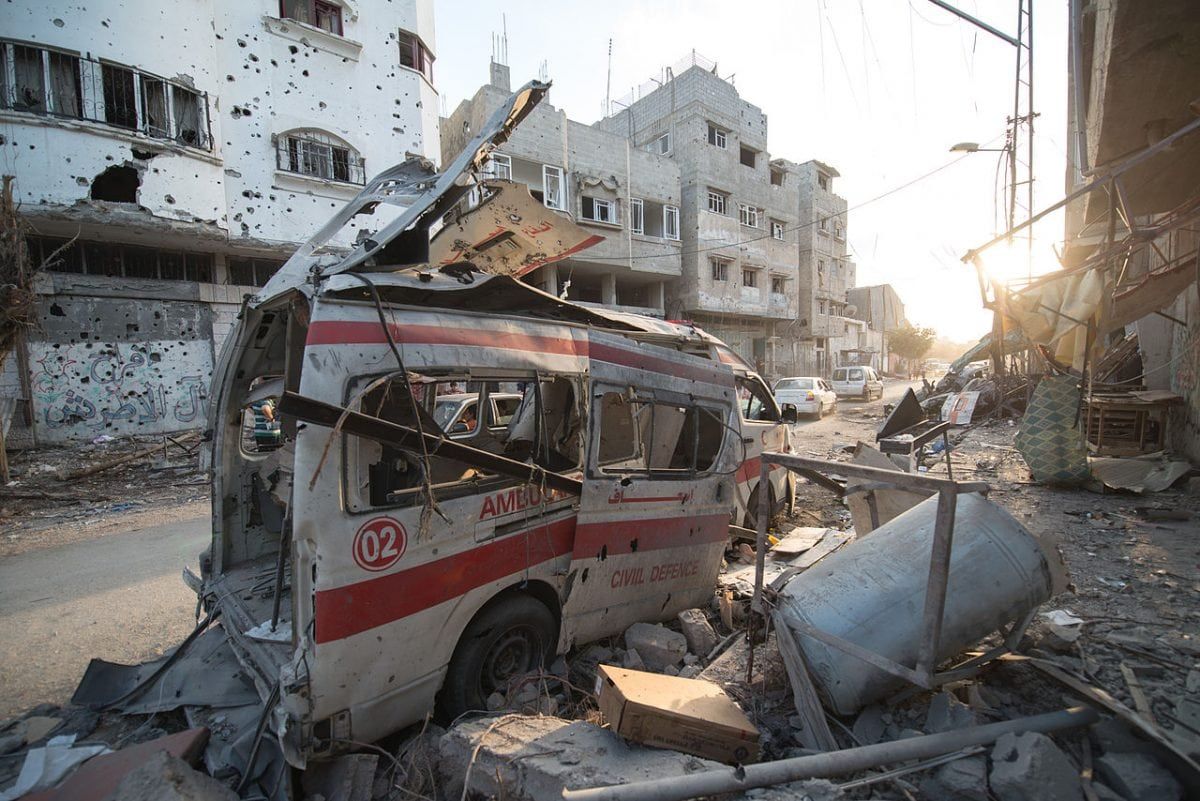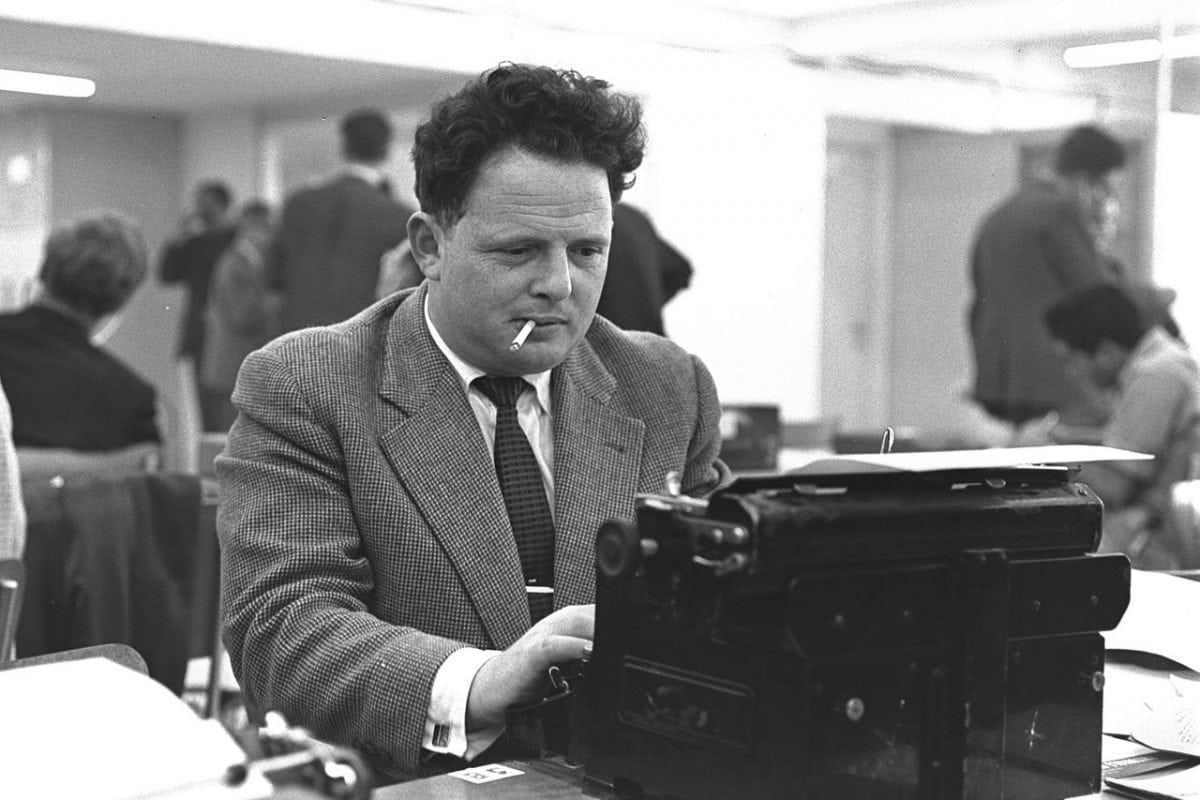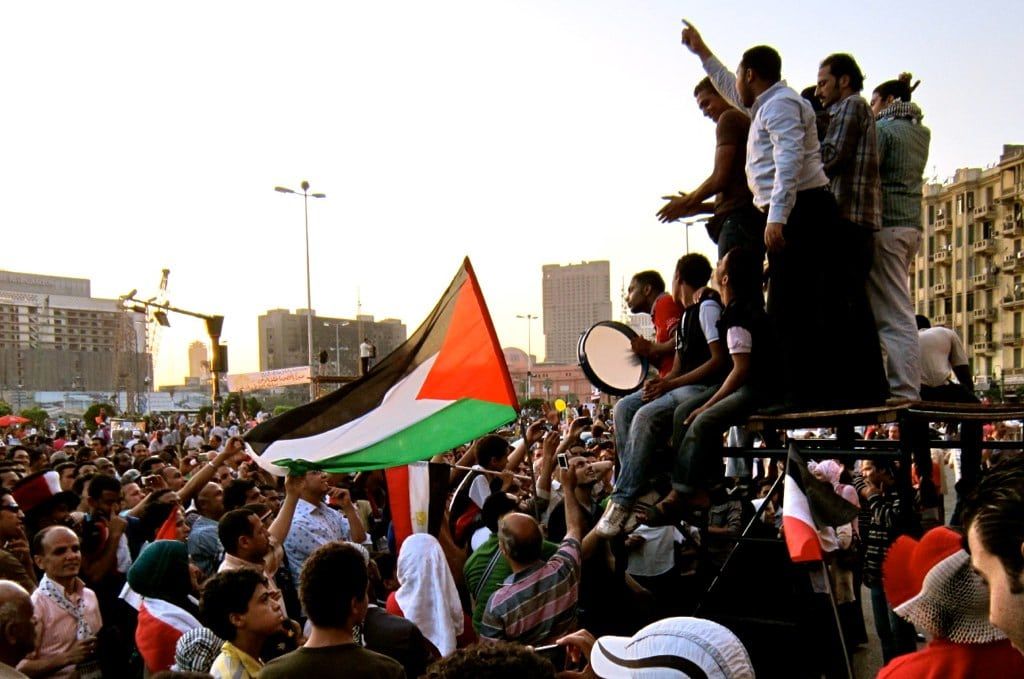A year and a half ago a book written by M.E. McMillan titled From the First World War to the Arab Spring: What’s Really Going on in the Middle East? landed on my desk for review. The title neatly summarizes the content, so no further description is needed other than mentioning that the book is very good and well worth your while. It all proceeds smoothly, following the historical timeline until it approaches our present day and the two solitudes of Israel and Palestine, the neighbours who rarely speak. At this point, Margaret McMillan felt the need to go on for several pages explaining the order of the next chapters. Here is an extract:
There will be no attempt to create an overarching narrative of the Israeli-Palestinian conflict. No attempt to take sides. No attempt to offer easy answers. The history of this conflict is too complicated for that. Instead, both sides of the story are presented, starting with the Israelis. This is not to give the Israelis the first word – or, for that matter, to give the Palestinians the last word – but for the very simple reason that “I” comes before “P” in the English alphabet.
Thus are the sensitivities concerning that narrow strip of arable land along the Eastern Mediterranean and the peoples that occupy it. When even the order of introduction can cause offence, how can diplomacy ever begin? And that difficulty is compounded by the names of introduction as there are those who reject the idea that there is even such an identity as Palestinian living in the West Bank or Gaza; or should I say Palestine, or should I say Occupied Territories? I think you get my point.
A further conundrum presents itself. Whether one chooses to take a starting point of a hundred years from the time of the Balfour Declaration, seventy years from the founding of the state of Israel, or fifty years from the Six Days War, from any of those moments to now diplomatic and academic conversation has failed to ease the conflict geographically bordered roughly between the Mediterranean and the Jordan River to the east, the Mediterranean and Sinai Desert along the Gaza Strip. Where the training and insight of learned professionals backed by the good intentions (and modern weaponry) of the mightiest nations have failed, what hope is there for any writer working in any form to make any appreciable difference?

Not that the likelihood of failure ever stopped anyone from trying. F. Scott Fitzgerald in one of his dark moods observed, ‘Show me a hero and I’ll write you a tragedy’ to which I reply across the decades, ‘Show me a tragedy and you’ll find there a writer.’ That is why a story like Joseph Conrad’s Heart of Darkness still resonates and is read more than a century after its publication. Like Marlow, we voyage down the Congo seeking the mad and broken Kurtz. Writers balance their lives with two seemingly opposite desires – equally wanting to truly see life as it is and wanting to express life as it could be. Or, as the slain American Senator Robert F. Kennedy phrased it, ‘There are those that look at things the way they are, and ask why? I dream of things that never were, and ask why not?’ Not incidentally, Kennedy’s assassin Sirhan Bishara Sirhan was a Palestinian born in Jerusalem.
I can’t say most, but certainly a good section of the authors I have most admired over the years have written about the region, everyone from T.E. Lawrence (The Seven Pillars of Wisdom) through to Christopher Hitchens at least until the late Hitch threw his silky baritone voice behind the Iraq War. There are many more, however a more presently significant group of writers will be mentioned soon enough. Bear with me for the moment.
For you see, thanks to the support of The London Economic I am going to the region myself in a few short weeks; to see and report, to imagine and think, to write four articles and a book expanding on those. Do I know what I will find there, in Israel and the West Bank, or in Gaza? No, of course not and that is a good thing. For when one travels with an expected result, that is the result that will be found. It is better to travel as Marlow did – seek the goal and report on the journey with meaning discovered by the reader.

I have thought deeply about this for if it is to be worthwhile there must be a positive result and I do not just mean mere popularity or a nice cheque from a publisher. You see, the sum of all the thousands of articles and books, the millions of words they contain, written over decades have amounted to next to nothing when it comes to peace. And every day without a furtherance towards peace amongst the people who live in these historic lands leads to a further frustration which leads to further violence which leads away from peace. We drift away from the shore no matter how many strong shoulders apply force to the oars.
I m under no illusion that what I write will move the souls of millions; I’m not quite that vain. But a thousand or three? Well, that would be a good start. Still, there is the issue of just how to go about doing it. If what has been done before has failed, what is there left to try differently?
It is this. Once upon a time there was this thing called The New Journalism. Some say it began with John Hersey’s report on the dropping of the atomic bomb on Hiroshima, as published in The New Yorker in 1946. Others point to Rachel Carson’s 1962 book on the environment, Silent Spring. The full flower of The New Journalism though was in the 1960s and 1970s, in the pages of The New Yorker, Esquire, Rolling Stone and many a book or anthology. The names should still be familiar to you: Tom Wolfe, Gay Talese, Truman Capote, Norman Mailer, Hunter S. Thompson. (It was mostly a boys’ club unfortunately.)
Most of The New Journalists were or became novelists with varying degrees of success. Now that should not come as a shock – reporters and freelance journalists mostly begin as novelists who are suddenly faced with rent arrears. Journalism, the business of facts, was supposed to be kept in a quarantine well away from the made-up stuff of fiction. The New Journalists chose to not only allow them to meet but to marry. I think it is time for a renewal of vows, so to speak.

Therefore, what these forthcoming articles will contain will be the result of three choices: Persona, Subject and Style. The first, Persona, may sound a strange word to use for a writer to use, particularly one who writes in the first person. Is not the voice I write in anything other than my own voice? Sort of. Allow me to pull back the curtain, but do keep what I reveal a secret, would you?
Walt Whitman wrote in his poem ‘Song of Myself’:
Do I contradict myself?
Very well then I contradict myself,
(I am large, I contain multitudes.)
Similarly, there is a trick to writing (ahem) truthful dialogue in plays or novels. You do not write how people actually talk – very few of us actually speak in complete sentences for one thing – rather how people think that we talk. The craft is to write voices that are understandable and attractive in the broadest sense of the word. That is what we do, novelists, dramatists and journalists alike. We create a Persona.
The voice for the Palestine series will not be this slightly aloof that you are reading here. It must be bolder and conversational rather than this didactic monologue. It must suit the Subject.
For that was the second choice. I could, I am sure, sit down with Netanyahu or whomever is a spokesperson for the Israeli Labor Party, Hamas or any other politician and that might be of some interest, yet would it actually get us anywhere? Unlikely and more to the point I think it would be an error to concentrate on the governors rather than the governed. War is an order from above; peace grows upwards from the ground.

Through my contacts in the region I will be meeting with poets, artists, cooks, shopkeepers, regardless of nationality or culture or religion. Indeed I would be delighted if the whole subject of religion never came up once during my time there but fat chance of that. I want to know how people actually live and how they would like to live. In a world where borders returned to invisibility (for they do not exist in nature, only on maps) what would happen next? So that or those are my Subjects.
And thus, crucially, the matter of Style. There is a reason people remember more about novels than they do news stories; the former are much more interesting than the latter. That is what The New Journalists knew, and that is what they used. All the techniques of novel writing must be brought to bear on this Subject matter and through the voice of the Persona.
That includes fiction. Oh, I promise both my editor and you the reader that anything presented as a fact in these articles will be a fact. Yet, well let me put it this way. When Leonardo painted Lisa La Gioconda I am quite sure that every millimetre of that famous small smile was painted with perfect detail. As to those Italian hills beyond her shoulders though, I think Da Vinci might have had a bit of fun. A portrait is not just a face, elsewise there would just be a face and nothing more. It is the framing, the atmosphere, where any artist worth a damn imposes the imagination.
Well now, there’s the story of what you will be reading and thank you for reading thus far. Although I might like to think of myself as containing multitudes, without your eyes I quite disappear. And now if you’ll excuse me I have to take a look at the costuming. Where did I pack that Panama Hat and the Famous Fish Shirt?
Be seeing you.

